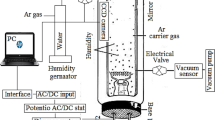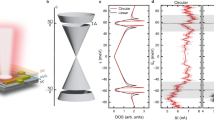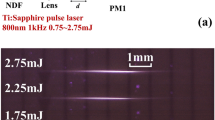Abstract
THE gas-filled, incandescent tungsten lamps used as photometric and radiometric standards have good long term stability, but their performance is frequently marred by fluctuations in light output resulting from changes in the convective cooling of the filament. Typical fluctuations are shown in Fig. 1a, which is a record of the output from a ribbon filament lamp of the type used at the National Physical Laboratory (NPL) as a standard of spectral radiance (Fig. 2a). In this situation, an accuracy of 0.1% (a common requirement in standards work) can only be obtained by averaging for several seconds, a tedious restriction where a large number of measurements is required.
This is a preview of subscription content, access via your institution
Access options
Subscribe to this journal
Receive 51 print issues and online access
$199.00 per year
only $3.90 per issue
Buy this article
- Purchase on SpringerLink
- Instant access to full article PDF
Prices may be subject to local taxes which are calculated during checkout
Similar content being viewed by others
Author information
Authors and Affiliations
Rights and permissions
About this article
Cite this article
GILLHAM, E., HARMER, D. & MOORE, J. Fluctuations in the light output from gas-filled incandescent lamps. Nature 258, 416–417 (1975). https://doi.org/10.1038/258416a0
Received:
Accepted:
Issue date:
DOI: https://doi.org/10.1038/258416a0



